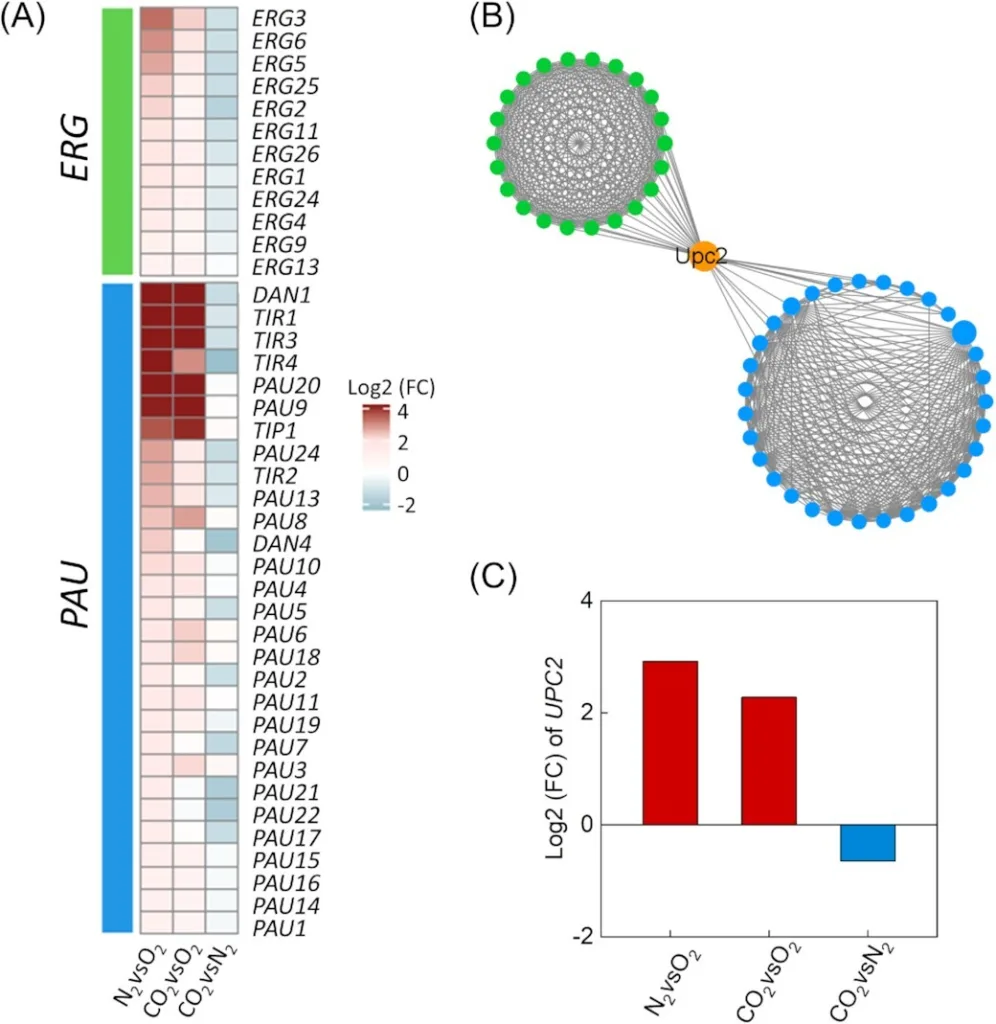Genome-Wide Transcriptional Regulation in Saccharomyces cerevisiae in Response to Carbon Dioxide
Themes: Conversion
Keywords: Genome Engineering
Citation
Tan, L., Liu, J.J., Deewan, A., Lee, J.W., Xia, P.F., Rao, C.V., Jin, Y.S., Wang, S.G. Oct. 25, 2021. Data from: “Genome-wide transcriptional regulation in Saccharomyces cerevisiae in response to carbon dioxide.” NCBI. https://www.ncbi.nlm.nih.gov/bioproject/PRJNA774407/.
Overview

Sugar metabolism by Saccharomyces cerevisiae produces ample amounts of CO2 under both aerobic and anaerobic conditions. High solubility of CO2 in fermentation media, contributing to enjoyable sensory properties of sparkling wine and beers by S. cerevisiae, might affect yeast metabolism. To elucidate the overlooked effects of CO2 on yeast metabolism, we examined glucose fermentation by S. cerevisiae under CO2 as compared to N2 and O2 limited conditions. While both CO2 and N2 conditions are considered anaerobic, less glycerol and acetate but more ethanol were produced under CO2 condition. Transcriptomic analysis revealed that significantly decreased mRNA levels of GPP1 coding for glycerol-3-phosphate phosphatase in glycerol synthesis explained the reduced glycerol production under CO2 condition. Besides, transcriptional regulations in signal transduction, carbohydrate synthesis, heme synthesis, membrane and cell wall metabolism, and respiration were detected in response to CO2. Interestingly, signal transduction was uniquely regulated under CO2 condition, where upregulated genes (STE3, MSB2, WSC3, STE12, and TEC1) in the signal sensors and transcriptional factors suggested that MAPK signaling pathway plays a critical role in CO2 sensing and CO2-induced metabolisms in yeast. Our study identifies CO2 as an external stimulus for modulating metabolic activities in yeast and a transcriptional effector for diverse applications.